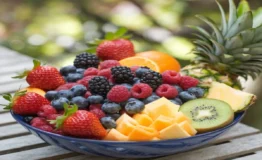What is the Difference Between a Croissant and a Gipfeli?
Croissants and Gipfeli are two popular pastries that may look similar, but the difference between croissant and Gipfeli lies in their ingredients, taste, and texture. While both are crescent-shaped, they originate from different culinary traditions, with croissants hailing from France and Gipfeli from Switzerland.
In this detailed article, I will explore their history, ingredients, baking methods, taste, texture, and cultural importance. Additionally, I will address frequently asked questions about croissants and Gipfeli.
Introduction to Difference Between a Croissant and a Gipfeli
Overview of Croissants and Gipfeli
At first glance, croissants and Gipfeli may look similar, but their taste, texture, and preparation distinguish them from each other. Both pastries have crescent shapes, but that is where many of the similarities end.
Croissants, originating in France, boast a rich buttery flavor and multiple flaky layers. The preparation involves a special technique called lamination, which creates thin layers of butter and dough. This method gives croissants their light, airy texture.
On the other hand, Gipfeli comes from Switzerland. It has a denser texture due to the lower butter content and simpler dough preparation. Because Gipfeli uses less butter, the final product has a more bread-like consistency than a croissant. Many people in Switzerland enjoy Gipfeli for breakfast, usually paired with jam or butter.
Both pastries hold special significance in their respective countries. Croissants represent the elegance of French cuisine, while Gipfeli symbolizes the simple yet hearty nature of Swiss baking.
History of the Croissant and Gipfeli
The history of the croissant begins in Austria with a pastry called the kipferl. This crescent-shaped treat dates back to the 13th century. Austrian bakers brought the kipferl to France, where the French transformed it into the croissant we know today. French bakers modified the recipe by using laminated dough, which involves rolling and folding butter into the dough to create the layers that give croissants their distinct flakiness.
To learn more about how the croissant became an iconic French pastry, you can explore its History of the Croissant.
In contrast, the Swiss Gipfeli has a simpler origin. While it may not have achieved global fame like the croissant, Gipfeli has earned a cherished place in Switzerland. The word “Gipfeli” comes from the Swiss-German term for peak or crest, which describes its shape. Over time, Gipfeli became a popular breakfast staple in Swiss households, where people pair it with butter, jam, or honey.
Key Difference Between a Croissant and a Gipfeli
in Ingredients
Butter Content in Croissants vs. Gipfeli
The amount of butter used in croissants and Gipfeli significantly impacts their texture and flavor. Croissants contain much more butter, which creates the flaky layers that make them so irresistible. The dough goes through the lamination process, where bakers fold butter into the dough multiple times to produce thin layers. As the butter melts during baking, it creates steam that separates the dough into distinct layers.
In comparison, Gipfeli contains far less butter. Its denser dough doesn’t undergo the lamination process, so the pastry lacks the same flaky structure. As a result, Gipfeli feels more like bread. This lower butter content makes it a lighter pastry, perfect for those who prefer a less indulgent treat.
Flour, Yeast, and Other Key Ingredients
Both croissants and Gipfeli use flour, yeast, and water, but their differences in flour type and dough preparation affect the final product. Croissants require a high-protein flour, which gives the dough the elasticity it needs for lamination. The yeast helps the dough rise, creating the airy texture that croissants are known for.
Gipfeli, on the other hand, uses a softer, lower-protein flour. This produces a denser dough, which results in a more bread-like consistency. The dough doesn’t need as much yeast as croissant dough, which further contributes to Gipfeli’s heavier texture.
Sugar and Sweetness Levels
One final difference between the two pastries lies in their sweetness levels. While croissants are usually unsweetened, Gipfeli often contains a small amount of sugar, giving the pastry a slightly sweet flavor. This mild sweetness complements the use of jams or other spreads, which Swiss bakers and home cooks often add to their Gipfeli.
Difference Between a Croissant and a Gipfeli
in Texture and Shape:
Texture: Flakiness and Density
The texture of croissants and Gipfeli varies significantly. Croissants, with their high butter content, achieve a delicate flakiness through the lamination process. Each bite reveals thin layers that break apart easily, creating a light, airy pastry. Croissants have a crispy exterior, but their interior remains soft and moist.
In contrast, Gipfeli has a denser, more bread-like texture. Since the dough doesn’t contain as much butter, Gipfeli lacks the flaky layers found in croissants. Instead, it feels more substantial when eaten. People often describe Gipfeli as chewier, with a soft, tender inside. This heartier texture makes Gipfeli a satisfying breakfast option.
Shape: Crescent vs. More Rounded
Both pastries share a crescent shape, but croissants typically have curved ends, emphasizing their crescent form. The ends of a croissant often curve inward slightly, adding to its decorative appeal.
In comparison, Gipfeli takes a more compact and rounded form. Although still crescent-shaped, Gipfeli looks sturdier due to its denser dough. This shape reflects the pastry’s practical nature, as Swiss bakers designed it for easy handling.
Baking Techniques and Regional Variations
4.1 Traditional Croissant Baking Techniques
Baking croissants requires an advanced technique known as lamination. During this process, bakers fold and roll cold butter into the dough multiple times. This step-by-step folding creates thin layers of dough and butter. The dough is chilled between folds to ensure the butter doesn’t melt prematurely. During baking, the butter melts and creates steam, causing the layers to separate and puff up.
The lamination process takes considerable time and effort, but it produces the light, flaky texture that defines a croissant. You can learn more about how lamination and other baking techniques vary by region in Swiss Baking Traditions.
Traditional Gipfeli Baking Techniques
In contrast, Gipfeli uses a simpler baking process. The dough is rolled out, shaped into a crescent, and baked without the lamination step. Because it contains less butter, Gipfeli requires less time to prepare than croissants. Before baking, the pastry is often brushed with an egg wash, which gives Gipfeli a shiny, golden crust.
This straightforward preparation makes Gipfeli an ideal choice for home bakers who want a simple, hearty pastry without the complexity of laminated dough. Despite its lack of flaky layers, Gipfeli delivers a satisfying texture and flavor.
Taste Differences Between Croissants and Gipfeli
Taste Profile of Croissants
The taste of a croissant centers on its rich, buttery flavor. Each bite provides a balance between the crispy exterior and the soft, delicate layers inside. The high butter content gives croissants a savory, indulgent taste, even when eaten plain.
However, croissants can also be sweet or savory, depending on the filling. Common fillings include chocolate, almond paste, and ham and cheese, making croissants versatile enough for breakfast, brunch, or dessert.
Taste Profile of Gipfeli
Gipfeli offers a milder, bread-like flavor. Since it contains less butter, Gipfeli has a lighter taste compared to croissants. Some versions of Gipfeli include a touch of sugar, which gives the pastry a subtle sweetness. This gentle sweetness pairs well with Swiss jams, butter, or honey, making Gipfeli an ideal canvas for a range of spreads.
While Gipfeli may lack the richness of a croissant, its light flavor and soft texture make it a versatile and satisfying option.






